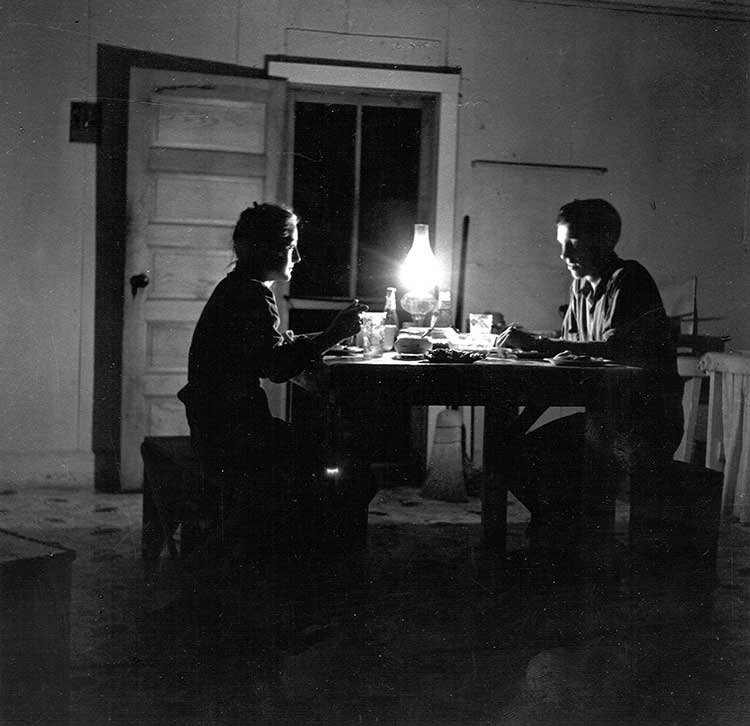Imagine waking up in the dark on a minus-35 degree morning like we had last winter. You turn on a kerosene lamp, pump some water, get wood burning in your kitchen stove, and finally after 30 minutes, get a little water boiling for coffee. That was life in rural America — until electric cooperatives, that is!
This story may seem like it’s from an impossibly-distant past, yet it’s still a real memory for some of Wolverine’s member customers. Most rural areas had no electricity before electric cooperatives. Electric systems were too expensive, and big power companies couldn’t make a profit stringing wire to distant homes in the countryside. So before cooperatives, most rural areas were literally in the dark.
In the 1930s, rural electric cooperatives formed all across the United States from a simple proposition — get your neighbors together, form a cooperative, borrow money from the U.S. Rural Electrification Administration and build your own rural electric distribution system. Nearly a thousand cooperatives formed, and for the first time, lights shone across huge swaths of America’s rural heartland.
By the late 1940s, power needs grew so quickly that many distribution cooperatives formed their own specialty cooperatives called G&Ts (Generation and Transmission cooperatives). Wolverine is a G&T, and it was formed in 1948.
You work for a unique form of company — a cooperative. Electric cooperatives are non-profit corporations whose customers are members. These members own and govern the cooperative. If revenues exceed costs (most companies call this profit, we call it margin), the margins go back to the customers! Wolverine’s mission has nothing to do with profits or shareholder return. We have a mission of service — to produce wholesale power and then deliver it to our members’ rural substations. I love working for a company with essential service at its core.





It is amazing to think of all of the transformation in such a short amount of time. We are very fortunate to work here!
The philosophy of putting service before profit should be used in alot of different industries. This is a great company!
The cooperative business model is something very special. It is such a great thing to have alignment between the customers of the organization (the members) and the owners of the organization (the very same members). I proudly presented on this in one of the classes I took in my MBA program.